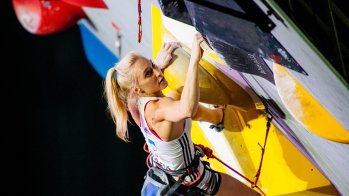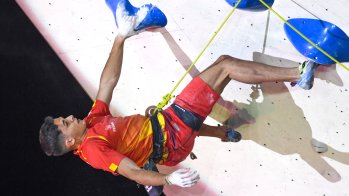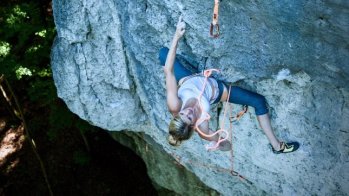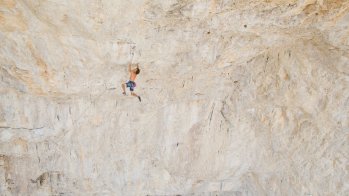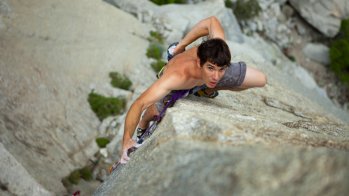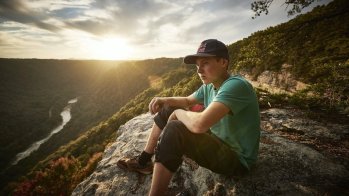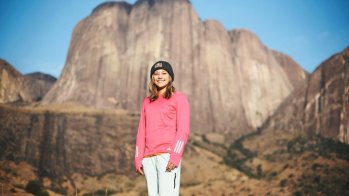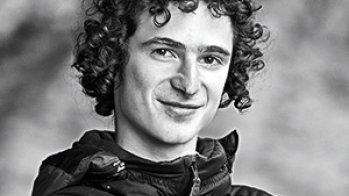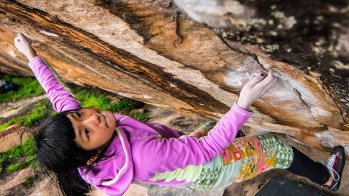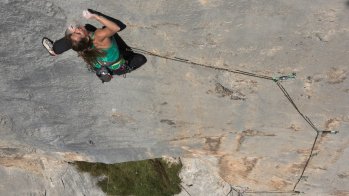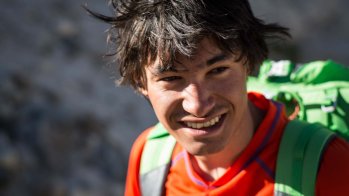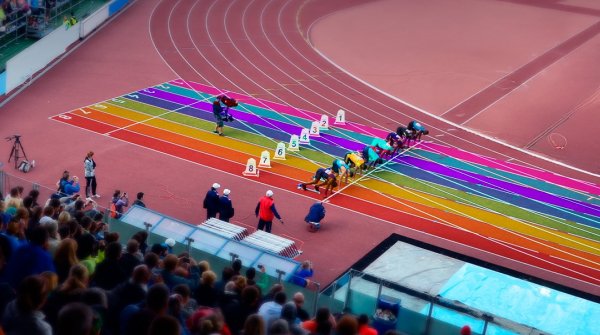
David Lama celebrated his first major alpine success in 2012, when he and Peter Ortner undertook the first free ascent of the Compressor Route at the Cerro Torre in South America. A film about the ascent made the son of an Innsbruck native and a Nepalese even more famous, not only in but also outside the climbing scene.
In 2018, Lama defeated Lunag Ri in Nepal. The 28-year-old made a dream come true and made history again, since no one had ever climbed that mountain before and Lama succeeded solo. Lama had attempted to climb the Lunag Ri three times before - unsuccessfully. His partner Conrad Anker suffered a heart attack in the second attempt.
ISPO.com: David, on your blog you write that climbing solo is more intense. Now you have conquered Lunag Ri alone - a project originally planned together with Conrad Anker. So let's talk about the crucial difference between being alone and being lonely.
David Lama: First of all: Loneliness is a feeling. Just because you're alone, it doesn't mean that you are lonely. Only in the long run that feeling may arise.
Please explain the difference.
The concept of loneliness often has a negative connotation. But I see it like this: you can concentrate very well on yourself in phases of loneliness. You perceive other things with a different intensity.
It took several attempts to reach the summit of Lunag Ri. You didn't make it until you went alone.
But I didn't feel lonely for a second. It was a fantastic experience, which had a lot to do with sorrow, but also with joy and even enjoyment.
Adam Ondra, Alex Honnold and Co: These Are the World's Strongest Climbers
You say yourself that you are incredibly choosy about who you take up the mountain with you.
Absolutely.
What do climbers have to bring if they want to go up the mountain with David Lama?
Extreme tours, for example to Nepal, are always unique experiences. When I climb a 6000 m mountain in the Himalayas, I want to be with someone with whom I like to travel. On the one hand, friendship is important to me, or rather, a personal relationship. On the other hand, I need blind understanding and trust.
Especially on difficult projects, a similar view of the world helps. It is fatal when you look at the mountain and for some it is child's play and for others it is a thing of impossibility. Then one wants to go the tour on the left, the other on the right. That's when the conflict starts.
Have you experienced it?
It happens all the time.
Are you usually the boss in the wall? Or is that a category that is of no importance on the mountain?
Mountaineering has a lot to do with efficiency. You are efficient when you work well together as a team. Accordingly, there are situations in which you make a decision for both, in which both decide together or in which your partner decides for you. If I am not the one who is lead climbing, I'll have to trust my leader blindly. The better you know each other and the closer you look at the mountain together, the better you work as a team.
That look on the mountain is your specialty. They say you can read walls very well.
You have to have a good imagination as a mountaineer: how you want to wind your way through a wall, or how you can take advantage of structures made of rock and ice.
When you noticed last year that you could do it, you would finally reach the summit of Lunag Ri - when did the joy set in?
The joy of conquering a mountain does not begin at the summit, but way before. With me, that was the case on the third day. I was alone in the wall, about 100 meters below the summit. That's when I saw the wall leaning back a bit. The summit ridge was shined by the sun. In a north wall. That's when I realized this must be the summit, it's gonna work. An incredibly beautiful moment.
The summit itself is not so important to you?
It was one of the few summit moments that have remained in my memory. Right at the top is a point at which you don't have to go on for a moment. As I said, mountaineering is about efficiency, so you're always aware of the environment. What are the snow conditions like? How's the ice? You absorb very little of the less important information. You may notice the sunrise, for example, but you don't have to use it to get up and down safely. This flood of information briefly stops at the summit.
Like in the eye of the storm.
That's right, yeah. This short moment of peace before you have to get ready for the descent is like in the eye of the storm. A few minutes in which you can also perceive and appreciate rather unimportant information for mountaineers. Let's call it: enjoying the moment.
The only child David Lama, the lone fighter David Lama, are you actually also single?
Yes, I am.
Thank you so much for the interview, and break a leg, David!
Thank you very much. Just one more thing - please write: happy single!
Editor's note: David Lama was hit by an avalanche on 16.04.2019 together with Hansjörg Auer and Jess Roskelley in the Canadian Rocky Mountains. The bodies were recovered on Easter Sunday (21.04.2019). We grieve for three great people. Our sympathy is with the relatives.
 OutDoor by ISPOOutDoor in transition
OutDoor by ISPOOutDoor in transition
- ISPO awards
- Mountain sports
- Bike
- Design
- Retail
- Fitness
- Health
- ISPO Job Market
- ISPO Munich
- ISPO Shanghai
- Running
- Brands
- Sustainability
- Olympia
- OutDoor
- Promotion
- Sports Business
- ISPO Textrends
- Triathlon
- Water sports
- Winter sports
- eSports
- SportsTech
- OutDoor by ISPO
- Heroes
- Transformation
- Sport Fashion
- Urban Culture
- Challenges of a CEO
- Trade fairs
- Sports
- Find the Balance
- Product reviews
- Newsletter Exclusive Area
- Magazine
